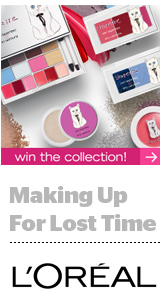 Data is part of the foundation at L’Oreal Canada – but that wasn’t always the case.
Data is part of the foundation at L’Oreal Canada – but that wasn’t always the case.
“L’Oreal is a marketing company, not an IT company – yet,” said Khoi Truong, director of media and data optimization at L’Oreal Canada. “But for the last year, we’ve been setting up our CRM and thinking about what we could do to leverage that information for media purposes. That’s why programmatic is a big play for us.”
Truong and his team had a chance to put that data to work on a recent programmatic campaign – L’Oreal Canada’s first – for Shu Uemura, a Japanese luxury makeup sub-brand of L’Oreal, which has good traction internationally but never really made inroads in North American markets. In fact, L’Oreal decided to remove Shu Uemura from US storefronts in 2010.
But the company had a feeling that North America could be a promising market for certain limited-edition Shu Uemura product releases, such as the launch of Shupette, a holiday makeup collection inspired by designer Karl Lagerfeld’s famously pampered blue-eyed cat Choupette.
It was just a matter of targeting the right people – mostly women between 25 and 30 who had previously purchased luxury beauty products online – at the right point in the funnel.
“There were challenges,” said Estelle Ngo, an analytics and data optimization analyst at L’Oreal. “We had a brand awareness deficit because there are no physical points of purchase in the US and only limited distribution in Canada. And our paid mass media presence came mostly through PR or organic means.”
To drum up interest, traffic and sales, L’Oreal got serious about desktop retargeting, turning to Google’s DoubleClick Bid Manager to get a handle on segmentation, hitting potential customers – both those who had previously visited a L’Oreal web property and users bucketed through look-alike modeling – with different pieces of display creative, depending on where they were along the path to purchase.
“We’re very focused on leveraging everything that we already have access to,” Ngo said. “Using the first-party data we have in our Google Analytics account, we created several different scenarios depending on the segment.”
In some cases, visitors were presented with particular Shupette products. In others, they were prompted to enter to win the entire collection: a total of $1,500 worth of cosmetics, including a set of $75 haute couture “furry fantasy premium false eyelashes.”
“We’re using first-party data from our website to inform how we purchase media, but it’s also very important for us to think about what content or product consumers are going to see when they visit our website,” Truong said. “That’s why we’re also trying to understand purchase intent. How you engineer a consumer’s path is based on how they interact with your website, which impacts what you serve them in terms of different creative and messaging. It’s all an important part of convincing the consumer to come back.”
But consumers aside, Truong and Ngo also had to convince L’Oreal execs that programmatic display could work for the brand. There was hesitation to move budget away from search, which had always performed well for L’Oreal, into uncharted territory.
“The marketers here weren’t sure it would drive conversions,” Truong said. “But we’ve seen that combining display with our own first-party data can have a real impact on how consumers engage with ads and then make purchases.”
The Shupette campaign, which ran during the pre-holiday season throughout October and November 2014, resulted in twice the expected sales in North America, as well as a 22:1 return on ad spend.
Throughout the course of the campaign, Ngo met with the DoubleClick team on a weekly basis to keep tabs on performance, track KPIs and optimize based on what was – or wasn’t – working. During an early phase of the campaign, for example, L’Oreal noticed that the US was performing better than Canada, so Google shifted the budget accordingly.
 The transparency of the process appealed to Truong, who has since arranged regular weekly meetings between L’Oreal Canada brand managers and their agency partners. L’Oreal Canada works with Xaxis and GroupM agency MEC to manage its media and tech relationships.
The transparency of the process appealed to Truong, who has since arranged regular weekly meetings between L’Oreal Canada brand managers and their agency partners. L’Oreal Canada works with Xaxis and GroupM agency MEC to manage its media and tech relationships.
L’Oreal also has its own dedicated team of agency reps within MEC called L’Equipe L’Oreal.
“We do trust our agency, but we also want to challenge them,” Truong said. “We’re exposed to the technology and we know what to look at in terms of KPIs. We’re asking for the same kind of thing from GroupM.”
L’Oreal Canada prides itself on staying smart about the tech. In addition to the Shupette pilot that L’Oreal ran with DoubleClick, the brand is in the process of testing out potential technology partners, including several DSPs, DMPs and TubeMogul on the video side.
“The strategy at L’Oreal globally is for us to create a direct relationship with the agency and to have the agency work with the partners that we’ve selected,” Truong said. “It’s more of a brand-led approach.”
Which is how it should be, he added.
“It seems like a lot of brands don’t understand how the technology works,” Truong said. “But we think a brand needs to have people who understand how a DSP works, how programmatic technology works. That’s something that’s missing right now in the industry.”














